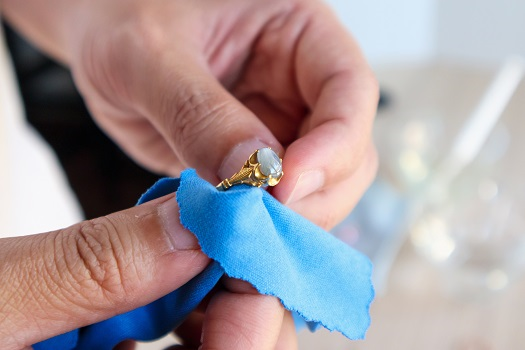Tips for At-Home Precious Metals Testing
Precious metals are certainly worth collecting and investing in. If you have precious metals in your possession, you may have concerns about purity and other issues. If this is the case, there are some ways you can safely test your precious metals at home. The experienced professionals from First National Bullion and Coin, San Diego collectors’ premier choice for gold, silver, platinum, and palladium, go over some of the more common methods below.
Inspect the Surface Area
Start with the obvious by checking for a hallmark. This is a mark included on many forms of precious metals that indicates purity. If you’re testing gold or silver bars, there should also be an indication of where the bar was minted, which gives you information about who to contact if you have concerns about quality. As long as you’re doing a visual inspection, look for:
• Fading around edges
• Tarnishing
• Scratches and other flaws
The results will give you a generally reliable idea about whether there’s any reason to be concerned about your precious metals. You can also look online to find images of authentic pieces for the sake of comparison.
Use Vinegar
One of the many uses for vinegar is to test precious metals. What you’re doing here is using vinegar to determine if there’s any noticeable color loss. If precious metals are pure or close to it, there shouldn’t be any noticeable loss of color when you apply a mixture of vinegar and water to a discrete surface area.
Use a Jeweler’s Stone
If you’re testing jewelry that contains precious metals, this can be a reliable method. Just be careful you don’t overdo it with the rubbing that needs to be done to get the results. In this instance, you’re going to rub the piece against the stone. If it shows up as gold or silver, it’s pure—or close to it.
Use an Unglazed Ceramic Plate
Place an unglazed ceramic plate on a flat surface and then scrape your precious metal against the plate. You’re looking for any streaking or lines. With gold, if you get a black line, you have a gold item and not one that’s just gold-plated.
Use Makeup
If you have liquid foundation handy, pour some of it on your hand, blend it in, and let it dry. Next, rub your precious metal on the area where you applied the foundation. If the area turns black or you see a line in the makeup when you rub the metal on it, you have genuine gold.
Have It Professionally Tested
If all else fails, you can always have precious metals tested professionally. You may be able to do this through the mail in some cases. Otherwise, look for an assayer or other precious metals expert. Taking this extra step also gives you a chance to get official documentation that details the nature and quality of your precious metals. You’ll also have the chance to ask questions and get advice if you have plans to part with your precious metals after testing has been done.
If you’re looking for the best place to purchase San Diego silver bars, gold coins, and other forms of precious metals, reach out to the trustworthy professionals at First National Bullion. We can answer all your questions and help you find all the information you need on how precious metals can be great investments. Give one of our experienced dealers a call today at (858) 304-7580.
The statements made in this blog are opinions, and past performance is not indicative of future returns. Precious metals, like all investments, carry risk. Precious metals and coins may appreciate, depreciate, or stay the same in cash value depending on a variety of factors. First National Bullion does not guarantee, and its website and employees make no representation, that any metals for sale will appreciate sufficiently to earn the customers a profit. The decision to buy, sell, or borrow precious metals and which precious metals to purchase, borrow, or sell are made at the customer’s sole discretion.


